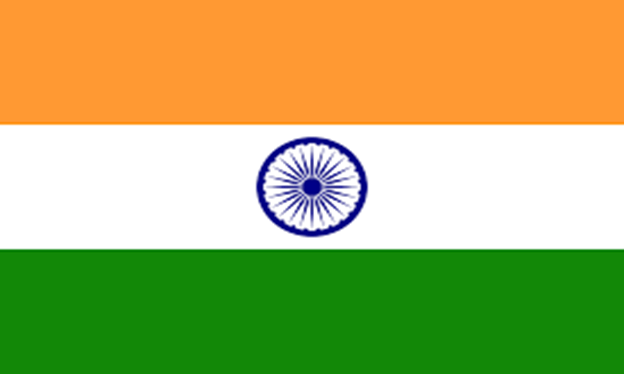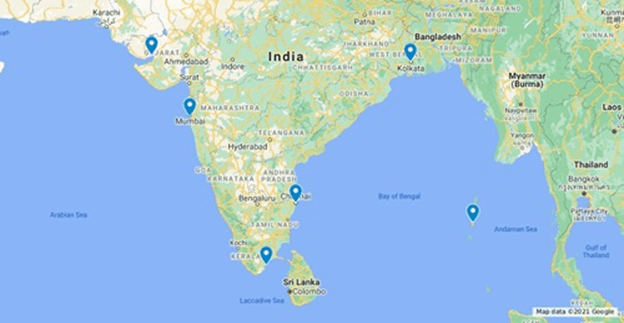
Introduction to India
- India has a population of 1.366 billion people.
- Capital: New Delhi.
- Official Language: Hindi.
- Total Area: 1.387 km2.
- Currency: Indian rupee.
Economic Statistics of India
Economic Overview:
- India is the 2nd largest economy in Asia.
- India has a GDP of USD 2.87 trillion.
- India's largest industries: Cement, Paper, Sugar, Iron and Steel, Petrochemicals, Textile, Jute, Oil and Gas, Pharmaceuticals, Automobiles and parts, electronics, Healthcare, Consumer durables, Energy, construction, mining, and machinery.
Economy breakdown:
- Service sector: 62%
- Industry 27%
- Agriculture 15%.
Main Import partners of India
- China 14%
- United Arabs Emirates: 6%
- United States 8%.
- Saudi Arabia: 6%
- Iraq: 5%
- Switzerland: 4%
Main exporters to India:
- China 6%
- United Arabs Emirates: 9%
- United States 17%.
- Hong Kong: 4%
- Singapore: 3%
- United Kingdom: 3%
The Manufacturing Industry in India
The Manufacturing Industry contributes to India's economic growth yearly by at least 17 % in GDP.
The expansion of India's manufacturing industry is due to the adoption of new technologies, good government support systems, infrastructure, innovation, industrialization, urbanization, highly skilled workforce, research and development.
The expansion of India's manufacturing industry has contributed to the country's economy through increased employment opportunities, shaped education systems, promote small and medium enterprises and increased minimum wages.
Some of the largest manufacturing Sub-sectors in India include:
- Iron and Steel Industry: In 2019, India replaced Japan as the second-largest producer of iron and steel globally. It produces about 83 million tons of finished steel and over 9 million tons of raw iron. This industry's growth is attributed to a government policy formed in 2017 under National Steel Policy to encourage benchmarking.
- The iron and steel industry used different weighing scales to increase accuracy and enhance consistency and valuation.
- Healthcare Industry: Healthcare is one of India’s largest sectors in terms of employment opportunities and revenue generation. India has a large pool of highly trained medical professionals that supports the healthcare system in both the public and private sectors.
- The cost of surgery in India is one-tenth lower than in western countries.
- With increased access to insurance, India’s healthcare market value is expected to reach over USD 370 billion by 2022.
Some of the Healthcare weighing equipment that Camaweigh trade include:
This industry uses weighing equipment for accuracy and to maintain consistency in its line of production.

The Transportation and Logistic Industry in India
Given India's economic growth, the demand for weighing scales in the transportation and logistics services in India's economy is diverse and is expected to grow.
In 2025, India's logistics sector is expected to expand due to good government policies, innovations, infrastructural development, and technology advancement.
Weighing scales are used in the transportation and logistics industry to ensure accuracy and consistency.
Types of Weighing System Used in Transportation and Logistic Industry
These weighing scales are applied to many industries, such as shipping, construction, agriculture, logistics, and vehicle.
- Wireless Portable Weighing Scales.
- Traffic Lights and Displays Scales.
- Junction Boxes.
- Thermal Printers
- NFC Cards
- Intelligent system.
Sea Ports and Trading Hubs of India
India is accessible by both land and sea.
For international trading, India's main seaport includes Kandla Port, Mumbai Port, Chennai Port, Port Blair Port, Kolkata Port, Tuticorin Port, Cochin Port, Ennore Port, Panambur Port, and Vizag Port./p>
When exporting products to our clients in India, Camaweigh uses the largest and busiest Kandla port.

What Weighing Scales does India Import?
According to the latest trade data, some of the leading weighing scales that India import include:
- Intelligent Scales.
- Counting Scales.
- Test Weights.
- LPG Filling
- Airport Scales
- Single scissor lift table.
- Logistic scale
What regulations are there on importing equipment to India?
The government of India requires all importers to follow the importation guideline. Below are some of the documents that must be presented to the customs authorities.
- Certificate of Origin.
- Commercial invoice.
- Certificate of compliance with foreign trade regulations.
- Document of inspection
- Certificate of weight and volume
- Cargo release order
- Packing list
- Pay tax on imported items
- Insurance certificate
- An importer must obtain an Import- Export Code Number (IEC).
- Bill of landing
Camaweigh will make sure to handle all logistic and document processes for your company and our worldwide clients.
Why Should India Import Equipment?
- Quality of equipmen – The quality of internationally manufactured weighing equipment is much better than the locally manufactured ones.
- Availability – Given domestic competition and high production and labor costs, equipment is more expensive to buy domestically than internationally.
- Long-term agreement - Most local suppliers have no capacity to sign long-term agreements, paving the way for imports.
Where Can I buy Equipment for India?
Camaweigh has been exporting a wide range of weighing equipment to clients in India. Feel free to contact us at [email protected] or WhatsApp us at +86-131-2037-9271 for a FREE quotation.
We also ship worldwide; for other countries, check out our experience here.


 French
French Spanish
Spanish